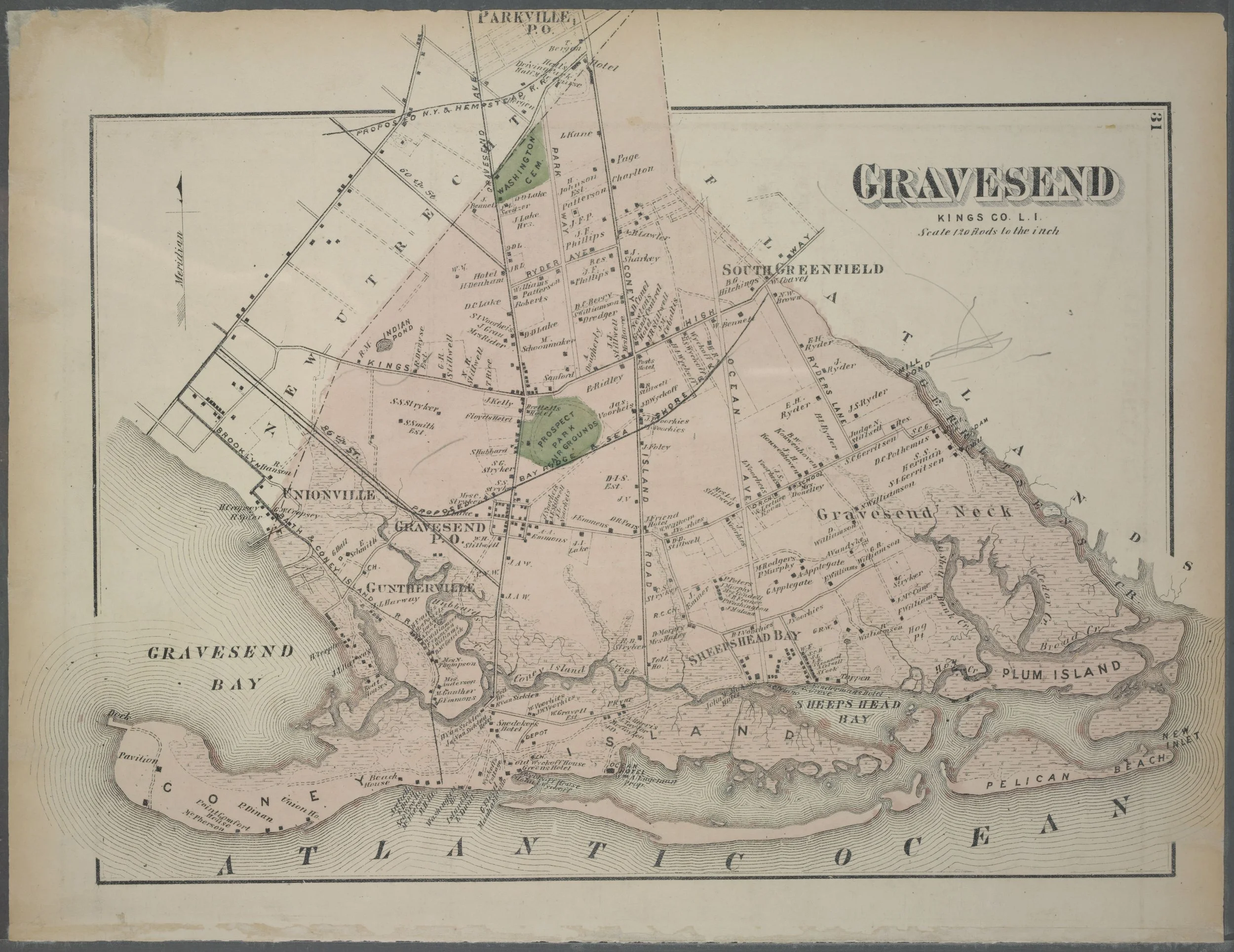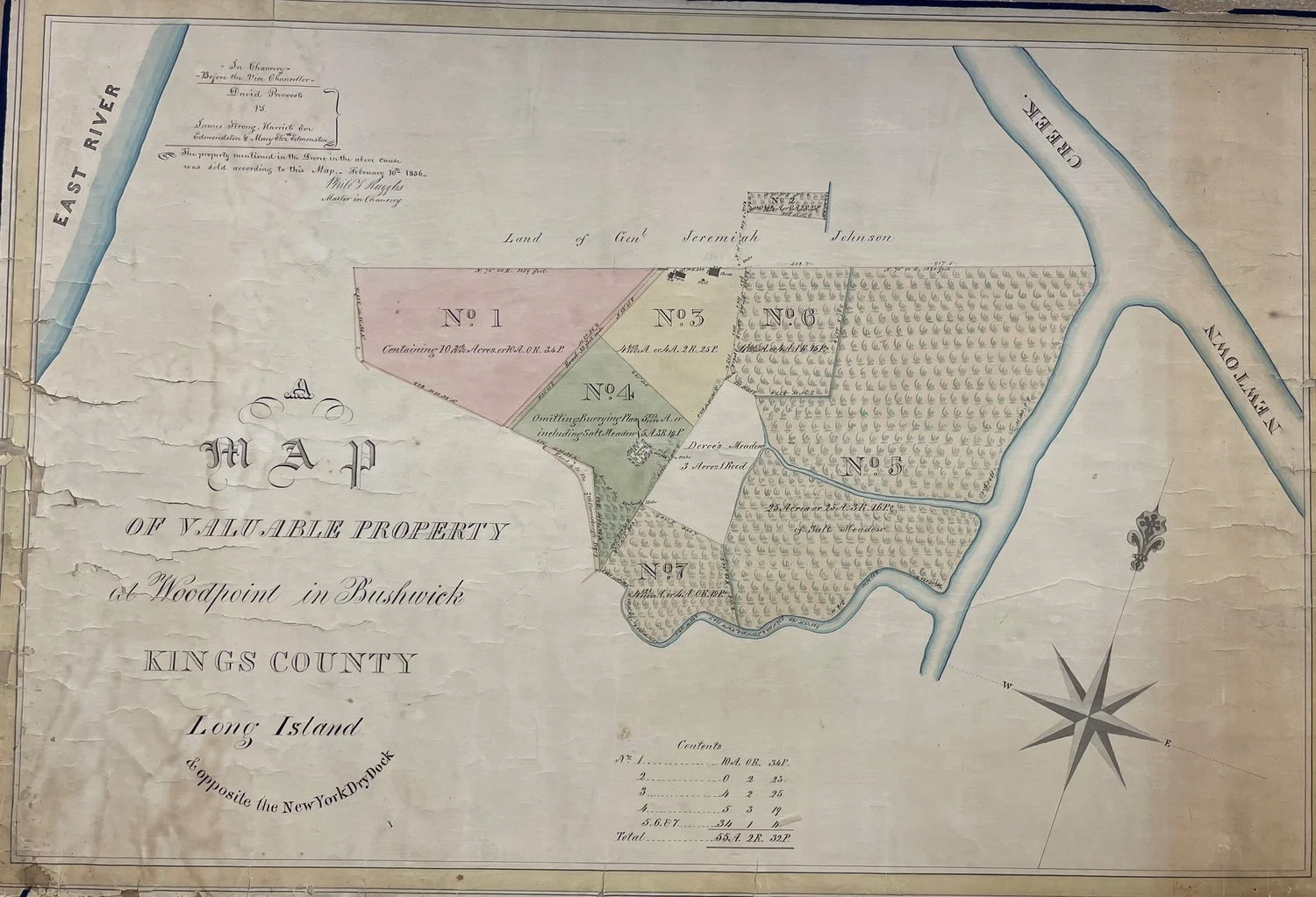Welcome to Breuckelen: The Story Behind the Borough’s Dutch Past
by Jack Campbell, Lott House Volunteer and Contributor
When most people think of Brooklyn, farmland is probably not the first image that comes to mind. Today, the borough is a densely urban landscape filled with skyscrapers, apartment buildings, and busy streets. Even quieter neighborhoods like Marine Park—home to the historic Hendrick I. Lott House—don't feel truly rural, especially when the city’s hustle and bustle is just a short bus or subway ride away. But a hundred years ago, much of Brooklyn was still farmland.
For thousands of years, the area was home to the Canarsee, a local Native American tribe, long before Europeans arrived in 1609. It wasn’t until the 1680s that the region came under English control. While early European settlement focused primarily on Manhattan Island, a smaller cluster of farms was established across what is now known as the East River. The Dutch town of Breuckelen would later be anglicized to Brooklyn and encompass the whole area. This town covered modern-day Brooklyn Heights, while the other towns included Amersfoort, New Utrecht, Boswijck, Midwout, and Gravesend. Amersfoort, which covers modern-day Flatlands, is the oldest of the group.
Walking through Gravesend's streets, one can see houses, bodegas, and other small businesses. However, the neighborhood's history dates back to the original farmers of the 1600s. In fact, Gravesend would be the first settlement in the so-called "New World" to be founded by a woman. Lady Deborah Moody was an English aristocrat seeking religious freedom when she traveled to Puritan New England. But when she arrived, she found that even more religious persecution existed there. So, she made her way to Dutch New Amsterdam, and the local Colony Director, Willem Kieft, granted her a stretch of land in the area she named "Gravesend." The expanse of the tract was so large that it encompasses modern-day Gravesend, Coney Island, Brighton Beach, Sheepshead Bay, and Bensonhurst, all not far away from here in Marine Park.
If you're curious about the other historic towns near the land where the Lott House stands, consider the town of Nieuw Amersfoort, later renamed Flatlands by the English. Like many of the surrounding settlements, it began as a small farming village. Established in 1636, Nieuw Amersfoort was named after the Dutch city of Amersfoort and became one of the earliest agricultural communities in the region. It was known for its fertile land and was primarily settled by Dutch farmers who laid out their homesteads in long, narrow strips typical of Dutch land division. The town was also home to Pieter Claesen Wyckoff, an early settler whose house still stands today and is one of the oldest surviving Dutch homes in the United States.
To the north, Boswijck, meaning "town in the woods," was founded in 1661 and developed as a farming and brewing community and eventually became more industrialized. Meanwhile, to the southwest, New Utrecht was founded in 1652 by Jacques Cortelyou, the Surveyor General of New Netherland. The land was originally purchased by Anthony Jansen van Salee, a controversial figure of Muslim heritage and early settler who owned a large tract of land in the area. New Utrecht remained relatively remote for years, and it took nearly two decades for its population to grow enough to warrant formal incorporation.
Here at the Lott House, we've discussed the history of baseball in Brooklyn, which primarily took place in Flatbush. But long before the Dodgers played on Flatbush Avenue, the Dutch settlers had already settled the area and called it Midwout. The English later called it Flatbush, a name derived from the Dutch word meaning "thick forests," which accurately describes what the area looked like at the time- an area of thick woods that even the Dutch found difficult to clear. It would also be here that the first church in the "borough of churches" was founded in 1654. Although the center of life in New Amsterdam was Manhattan Island, the future borough of Brooklyn still proved to be an important locale. Inhabitants settled in the mentioned towns and developed their own leaders. These leaders aired grievances to figures such as Peter Stuyvesant in New Amsterdam and tried to make their mark. They were as much a part of the colony as their counterparts on Manhattan Island. Though smaller in number and even more rural (although the Manhattan of the 1600s was also extremely rural), it still developed and grew into an important post in the Dutch Empire.
Bibliography
Shorto, Russell. The Island at the Center of the World. (New York: Vintage, 2005).
A Tour of New Netherland: New Netherland Institute. The New Netherland Institute.
Boswijck: New Netherland Institute, The New Netherland Institute
Brooklyn Public Library: Brooklyn in the Civil War. Brooklyn Public Library.
History of Flatlands, The Van Voorhees Association.
Life Story: Lady Deborah Moody (1586-1659), Women & the American Story, Women and the American Story, The New York Historical.
The Lady of Gravesend, Brooklyn Public Library
The Old Town Records Collection: A Frenchman’s Possessions, Meyer, Steven. NYC Department of Records & Information Services.” NYC Department of Records & Information Services
The Turk Anthony Jansen van Salee,” The New Netherland Institute




